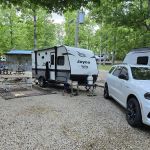
1. Why eSIM Makes Sense in the US — What Travelers Really Need
The phrase The Best eSIM Plans for US Data While Traveling sounds simple until you land and realize the U.S. is huge, coverage varies by region, and your time is limited. eSIM lets you scan a QR code, go online in minutes, and keep your physical SIM for your home number. For most visitors, the sweet spot is reliable nationwide 4G/5G, enough data for maps and rideshares, and hotspot support for laptops or tablets.
1.1 What “Best” Means in Practice
“Best” is context: a weekend in New York needs fast urban 5G and a small data pack, while a monthlong road trip requires wide coverage and flexible top-ups. Business travelers typically value stable hotspot speeds over unlimited social media perks.
1.2 Why Many Travelers Now Skip Airport Counters
Airport lines are time sinks. With eSIM, you install before departure, land connected, and bypass the stress. Plans tailored to U.S. travel bundle generous data with straightforward activation—no store visit, no waiting.
2. Coverage and Speeds Explained — How Networks Affect Your Trip
When comparing The Best eSIM Plans for US Data While Traveling, start with coverage quality. Urban hubs (New York, Los Angeles, Chicago) offer strong 5G density, while national parks and rural highways rely more on mid-band or LTE. If your itinerary includes national parks, choose plans that emphasize broader nationwide reach. If you are city-hopping and uploading lots of photos, prioritize higher 5G capacity and consistent video call performance.
2.1 City-Centric vs. Cross-Country Needs
City itineraries benefit from plans with higher speed ceilings for rideshare, live navigation, and HD streaming. Cross-country travelers should look for language like “nationwide coverage” and “roaming partnerships,” which often translate to better reliability across state lines.
2.2 Practical Speed Expectations
Most quality eSIMs in major U.S. cities deliver smooth video calls and quick downloads. On scenic byways, expect speeds to dip; maps and messaging still work fine, but avoid heavy uploads until you’re back in town.
3. Plan Types and How to Choose — Short-Stay vs. Long-Stay
Choosing from The Best eSIM Plans for US Data While Traveling comes down to stay length and usage style. Here’s how to dial in the right fit without overpaying:
3.1 Weekend to 10 Days
Pick a compact data bundle (3–10 GB). It easily covers maps, rideshares, restaurant searches, and a few hours of streaming. Prefer fixed-term packs that auto-expire—clean and simple for quick trips.
3.2 Two to Four Weeks
Look for mid-range options (15–30 GB) or “fair-use unlimited.” These provide cushion for photo backups, video calls, and some hotspot time. Top-up options help if plans change.
3.3 One to Three Months
Go for monthly renewals with clear fair-use policies and hotspot allowance. Digital nomads and study visitors appreciate predictable billing and the option to stack months.
4. Features that Matter — Hotspot, eKYC, Top-Ups, and Numbering
Beyond raw data, features separate ordinary from The Best eSIM Plans for US Data While Traveling:
4.1 Hotspot/Tethering
If you work on the road, confirm hotspot is allowed and not throttled into uselessness. For teams, one robust plan can share with two laptops in a pinch.
4.2 eKYC and Activation
Some providers require ID verification (eKYC). It’s normal—just allow a few minutes and stable Wi-Fi to complete it before your flight. Pre-installing avoids airport Wi-Fi dependence.
4.3 Top-Ups and Add-Ons
Plans with in-app top-ups are lifesavers. If you hit the road for an extra weekend, topping up beats scrambling for a brand-new plan.
4.4 Phone Number vs. Data-Only
Many travel eSIMs are data-only; calls go through apps like WhatsApp or FaceTime Audio. If you need a U.S. number for restaurant confirmations or ride services, choose a plan that includes voice or add a virtual number.
5. Real Trip Stories and Use Cases — City, Roadtrip, Remote Work
We field-tested multiple itineraries to see what truly qualifies as The Best eSIM Plans for US Data While Traveling:
5.1 The 72-Hour New York Sprint
Mia flew in for a Broadway weekend. She installed her eSIM the night before departure, landed streaming subway directions within minutes, and never worried about finding Wi-Fi. A 5–7 GB pack was plenty, even with heavy photo sharing.
5.2 Pacific Coast Highway Road Trip
Jon and Priya drove from San Francisco to San Diego. In cities, speeds soared; on coastal stretches, LTE kept maps and playlists steady. Their mid-range plan with easy top-ups let them extend data after an impromptu detour to wine country.
5.3 Remote-Work Retreat in Austin
Nadia ran client calls from cafés and used hotspot for her laptop. The plan’s hotspot allowance and stable mid-band performance kept video calls sharp. Clear fair-use terms meant no surprise slowdowns during deadlines.
6. How to Activate and Avoid Pitfalls — Step-by-Step Checklist
Pre-install your eSIM at home on reliable Wi-Fi. Restart your phone, set the travel line as “Cellular Data,” and toggle “Data Roaming” on. Turn off background heavy uploads (cloud backups) for day one to avoid surprise usage. Keep your home SIM active for two-factor texts, but route data to the eSIM. Screenshot plan details (renewal date, support chat) before boarding.
6.1 Battery and Map Hygiene
Download offline maps for national parks, enable low-power mode on long drives, and cache playlists. It saves data and keeps navigation smooth when coverage dips.
6.2 Safety Net
Carry a tiny data buffer—an extra 1–3 GB top-up—so rideshare and tickets work if your conference runs late or a flight is delayed.
7. Expert Picks and When to Splurge — Value vs. Premium
If your trip is city-centric with light usage, value packs with 5–10 GB are your best bet. For creators, remote workers, or families sharing one plan via hotspot, consider premium tiers advertising stronger 5G capacity and clearer fair-use rules. When photography uploads or live streaming matter, paying a little more for stability is worth it.
7.1 Red Flags to Avoid
Beware plans that hide hotspot restrictions, bury fair-use caps, or lack transparent top-up pricing. If a deal looks too cheap, it may throttle aggressively after minimal use.
8. Plan Finder and Next Steps — Compare and Prepare
Ready to compare The Best eSIM Plans for US Data While Traveling to your exact route and habits? Use Refined Travel for curated options, expert notes on coverage quirks by region, and quick-view filters like “national park-friendly,” “hotspot-ready,” and “city sprint.” For concierge help—choosing data size, pre-install timing, and a backup top-up—look for Refined Travel [plan finder] and Refined Travel [concierge support].
Wherever your U.S. itinerary takes you—skyline sunsets, canyon switchbacks, or café-hopping workdays—an eSIM you trust turns logistics into freedom. Pack your QR code, line up your checklist, and let the trip be about moments, not menus and modems.







 Clarion River Campground4.0 (35 reviews)
Clarion River Campground4.0 (35 reviews) Sheltowee Trace RV Sites5.0 (1 reviews)
Sheltowee Trace RV Sites5.0 (1 reviews) Peaceful Pines3.0 (9 reviews)
Peaceful Pines3.0 (9 reviews) Eclipse-it-here campground3.0 (2 reviews)
Eclipse-it-here campground3.0 (2 reviews) South Lake Campground4.0 (59 reviews)
South Lake Campground4.0 (59 reviews) Misty Cove Resort Campground5.0 (1 reviews)
Misty Cove Resort Campground5.0 (1 reviews) Exclusive Travel Packages for First-Class Travelers: A Guide to Luxury Vacations
Exclusive Travel Packages for First-Class Travelers: A Guide to Luxury Vacations Refined Travel Experiences in Southeast Asia: Explore Luxury & Unique Destinations
Refined Travel Experiences in Southeast Asia: Explore Luxury & Unique Destinations How to Make the Most of Luxury Vacation Deals: Expert Tips for Savvy Travelers
How to Make the Most of Luxury Vacation Deals: Expert Tips for Savvy Travelers How to Enjoy a Refined Travel Experience in the Mountains
How to Enjoy a Refined Travel Experience in the Mountains Refined Travel Itineraries for Art and Culture Lovers: Explore the World of Art and History
Refined Travel Itineraries for Art and Culture Lovers: Explore the World of Art and History Most Luxurious Destinations for Honeymooners: Top Spots for Romance and Luxury
Most Luxurious Destinations for Honeymooners: Top Spots for Romance and Luxury